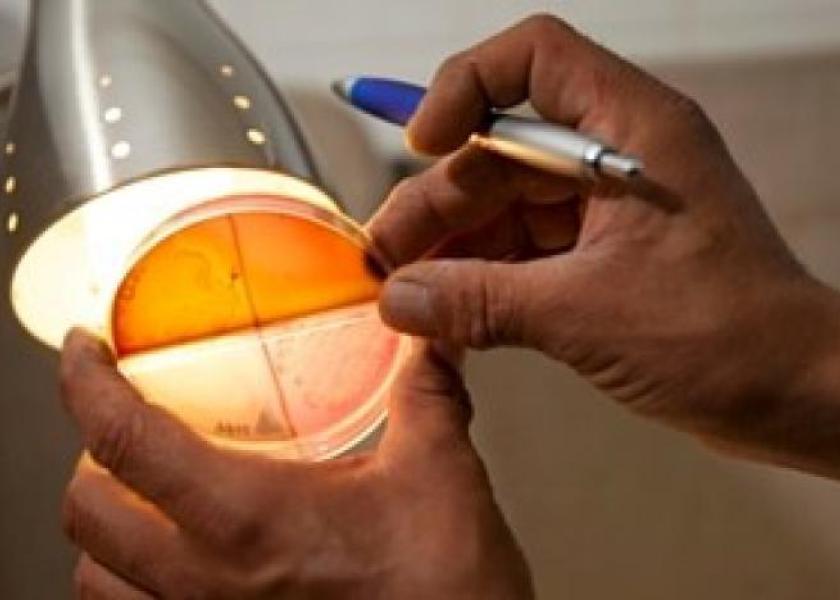Cornell study: Dairies can save thousands with strategic mastitis treatment

Reducing mastitis treatment costs by tens of thousands of dollars is possible, according to a new study from Cornell University. This study identifies a more calculated approach to mastitis treatments that reduces the overall amount of antibiotics needed. Not only does this new approach provide excellent cure rates, it is more cost-effective for dairy producers.
"The Cornell study compares the effectiveness of antibiotic treatment in extended therapy to selective therapy when treating mastitis," says Dr. Linda Tikofsky, Professional Services Veterinarian for Boehringer Ingelheim Vetmedica, Inc. "The dairy industry is conditioned to grab a tube and treat every case of mastitis that comes along. But, in reality, many mastitis cases will self-cure or are caused by pathogens that won't respond to antibiotic treatments well. Treating those cases is an unnecessary expense."
The study outlines four ways to react to and treat clinical mastitis on dairy farms:
No antibiotic treatment for mild and moderate cases, and supportive care — such as fluids and anti-inflammatory drugs — for severe cases. However, as was the case two decades ago, this may lead to an increase in chronic cases of mastitis and increased bulk milk somatic cell counts (SCC).
Similar (blanket) antibiotic treatment for all cases. This could lead to overtreatment of approximately 50 to 75 percent of all mild and moderate cases, and is costly.
Culture the milk on-farm, and make a treatment decision 24 hours after detection of mild and moderate mastitis. (Severe cases should be treated immediately.) This can help dairies decide which cases to treat and which are unlikely to respond to antibiotics.
Culture the milk through an outside service, and make a treatment decision 24 hours after detection of mastitis. New diagnostic technologies can determine which pathogens are present, and also identify any contagious pathogens.
Researchers compared two groups of cows that had mild or moderate clinical mastitis. The first group received blanket therapy, using one tube of Spectramast® LC (ceftiofur hydrochloride) daily for five days. The second group did not receive treatment for the first 24 hours while milk samples were cultured. Those with Gram-positive pathogens were given ToDAY® (cephapirin sodium) once every 12 hours for two treatments. Those with Gram-negative infections, other organisms or no growth received no treatment.
"The results should change the way dairies look at mastitis treatment," continues Dr. Tikosfky. "There were no statistically significant differences between the two groups in clinical cure, next-test-day milk production, somatic cell counts or risk of culling. But the days out of the bulk tank were much higher for the blanket therapy group, at almost nine days versus seven days for the culture group."
The study concludes that the additional cost of unnecessary antibiotics, combined with the amount of milk discarded, can cost dairy producers more than $32,000 per 1,000 cows.
Culturing mastitis infections will likely be a change in protocol for most dairies. However, this information-based, strategic treatment method will still offer cows similar cure rates and reduced time in the hospital pen, while saving thousands of dollars for dairy producers.







